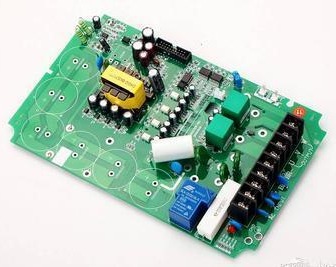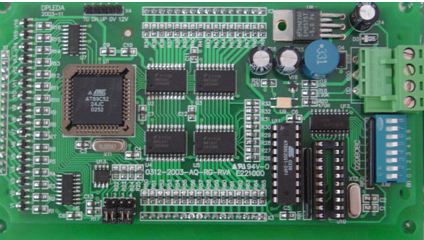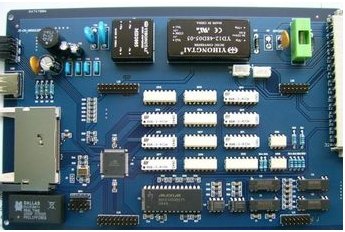
Generally, PCB made of soft insulating substrate is called soft PCB or flexible PCB, and rigid flexible composite PCB is called rigid flexible PCB. It meets the needs of today's PCB products to develop in the direction of high density, high reliability, miniaturization and lightweight, and also meets the strict economic requirements and the needs of market and technical competition.
Fundamentals of FPC FPC
Soft PCBs are generally classified as follows according to the number of layers and structure of conductors:

1.1 Single sided flexible PCB
A single-sided flexible PCB has only one layer of conductor, and the surface can be covered or not covered.
The insulating substrate materials used vary with the application of products.
Common insulating materials include polyester, polyimide, polytetrafluoroethylene and soft epoxy glass cloth
Single sided flexible PCB can be further divided into the following four categories:
1) Unilaterally connected without covering
The wire pattern of this kind of flexible PCB is on the insulating substrate, and there is no covering layer on the wire surface.
Like the common single-sided rigid PCB.
This kind of product is the cheapest one and is usually used in non critical and environmental protection applications.
The interconnection is realized by tin welding, fusion welding or pressure welding. It was often used in early telephone sets.
2) One side connected with covering layer
Compared with the former type, this type only has an additional layer of coating on the conductor surface according to the customer's requirements.
The pad shall be exposed when covering, and it can be simply not covered in the end area.
Clearance holes can be used if precision is required.
It is one of the most widely used single-sided soft PCBs, and is widely used in automotive instruments and electronic instruments.
3) Double sided without overlay
Such connectors can be connected on the front and back of the wire.
Therefore, a passage hole is opened on the insulating substrate at the bonding pad, which can be punched, etched or made by other mechanical methods at the required position of the insulating substrate.
It is used for mounting elements and devices on both sides and where soldering is required. There is no insulating substrate in the pad area at the path. Such pad areas are usually removed by chemical methods.
4) Double sided connection with covering layer
The difference between this type and the previous type is that there is a layer of coating on the surface. However, the covering layer has access holes, which are also allowed
Both sides can be terminated, and the covering layer is still maintained.
This kind of flexible PCB is made of two layers of insulating material and one layer of metal conductor.
It is used in situations where the covering layer needs to be insulated from the surrounding devices, and the end needs to be connected to both the front and the back.
1.2 Double sided flexible PCB
Double sided flexible PCB with two layers of conductors.
The application and advantages of this type of double-sided flexible PCB are the same as those of single-sided flexible PCB, and its main advantage is to increase the wiring density per unit area.
The utility model can be divided into the following categories according to the presence or absence of metallized holes and the presence or absence of coatings: a. the utility model has no metallized holes and no coatings; B There is no metallized hole and a covering layer; C There are metallized holes and no covering layer; D. There are metallized holes and coatings. Double sided soft PCB without covering layer is seldom used.
1.3 Multilayer soft PCB
Soft multilayer PCB is like rigid multilayer PCB
Multilayer soft PCB can be made by multi-layer lamination technology.
The simplest multilayer soft PCB is a three layer soft PCB formed by covering two layers of copper shielding layers on both sides of a single-sided PCB.
The three-layer flexible PCB is equivalent to coaxial wire or shielded wire in electrical characteristics.
The most commonly used multi-layer soft PCB structure is a four layer structure, which uses metallized holes to realize inter layer interconnection. The middle two layers are generally PCB power layer and grounding layer.
The advantages of multilayer flexible PCB are that the substrate film is light in weight and has excellent electrical properties, such as low dielectric constant. Multilayer flexible PCB board made of polyimide film is about 1/3 lighter than rigid epoxy glass cloth multilayer PCB board, but it loses the excellent flexibility of single-sided and double-sided flexible PCB. Most of these products do not require flexibility.
1. FPC electroplating of flexible circuit board
(1) Pretreatment of FPC Electroplating The exposed copper conductor surface of FPC after the coating process may be contaminated by adhesive or ink, as well as oxidation and discoloration caused by high-temperature process. To obtain a tight coating with good adhesion, the contamination and oxide layer on the conductor surface must be removed to make the conductor surface clean. However, some of these pollutions are firmly bound to the copper conductor and cannot be completely removed with a weak cleaning agent. Therefore, most of them are treated with alkaline abrasives and polishing brushes with a certain strength. Most of the coating adhesives are epoxy resins with poor alkali resistance, which will lead to a decline in the bonding strength. Although it is not obvious, the plating solution may infiltrate from the edge of the coating in the FPC electroplating process, In severe cases, the covering layer will peel off. In the final welding, the solder drill gets under the coating. It can be said that the pre-treatment cleaning process will have a significant impact on the basic characteristics of the flexible printed circuit board F {C, and the treatment conditions must be given full attention.
(2) Thickness of FPC electroplating When electroplating, the deposition speed of the plated metal is directly related to the electric field strength, which changes with the shape of the line graph and the position of the electrode. Generally, the thinner the wire width is, the sharper the terminal at the terminal is, the closer the distance to the electrode is, the greater the electric field strength is, and the thicker the coating at this position is. In the applications related to flexible printed circuit boards, there are many wire widths in the same line that are greatly different, which is more likely to cause uneven coating thickness. To prevent this, a shunt cathode pattern can be attached around the line to absorb the uneven current distributed on the electroplating pattern, and maximize the uniformity of coating thickness on all parts. Therefore, efforts must be made on the electrode structure. A compromise scheme is proposed here. The standard for the parts with high requirements for uniformity of coating thickness is strict, and the standard for other parts is relatively relaxed, such as the standard for molten solder plating, gold plating layer for metal wire overlap (welding), etc., is higher, while the requirement for coating thickness of lead tin for general anti-corrosion is relatively relaxed.
(3) The smears and dirt of FPC electroplating are just in the plating state. Especially, there is no problem with the appearance. However, some surfaces appear smears, dirt, discoloration and other phenomena shortly after. In particular, no abnormality is found during the factory inspection. However, when the user conducts acceptance inspection, there is a problem with the appearance. This is due to insufficient drifting, and there is residual plating solution on the coating surface, which is caused by chemical reaction slowly after a period of time. Especially for flexible printed boards, due to their softness and unevenness, various solutions are easy to accumulate in their recesses, and then they will react and change color in this part. In order to prevent this situation, not only full drifting but also full drying treatment should be carried out. It can be confirmed whether the drifting is sufficient by high temperature thermal aging test.
2. FPC electroless plating of flexible circuit board
When the line conductor to be electroplated is isolated and cannot be used as an electrode, it can only be electroless plated. Generally, the plating solution used for electroless plating has strong chemical effect, and the electroless gold plating process is a typical example. The electroless gold plating solution is an alkaline aqueous solution with very high pH value. When using this electroplating process, it is easy for the plating solution to drill under the coating, especially if the quality management of the coating laminating process is not strict and the bonding strength is low, this problem is more likely to occur.
Due to the characteristics of the plating solution, electroless plating with displacement reaction is more prone to the phenomenon of the plating solution drilling under the coating. It is difficult to obtain ideal electroplating conditions with this PCB process.
3. FPC hot air leveling of flexible circuit board
Hot air leveling was originally developed for coating lead and tin on rigid PCB. Due to its simplicity, it is also applied to FPC of flexible PCB. Hot air leveling is to directly and vertically immerse the plate into the molten lead tin bath, and blow away the excess solder with hot air. This condition is very harsh for FPC of flexible printed circuit board. If FPC of flexible printed circuit board cannot be immersed in solder without taking any measures, FPC of flexible printed circuit board must be sandwiched between wire mesh made of titanium steel, and then immersed in molten solder. Of course, the surface of FPC of flexible printed circuit board must be cleaned and coated with flux in advance.
Due to the harsh process conditions of hot air leveling, it is easy for PCB solder to drill from the end of the coating to the bottom of the coating, especially when the bonding strength between the coating and the copper foil surface is low, this phenomenon is more likely to occur frequently. As polyimide film is easy to absorb moisture, when hot air leveling process is adopted, moisture absorbed will cause blistering or even peeling of the coating due to rapid heating and evaporation, so drying treatment and moisture-proof management must be carried out before FPC hot air leveling.









